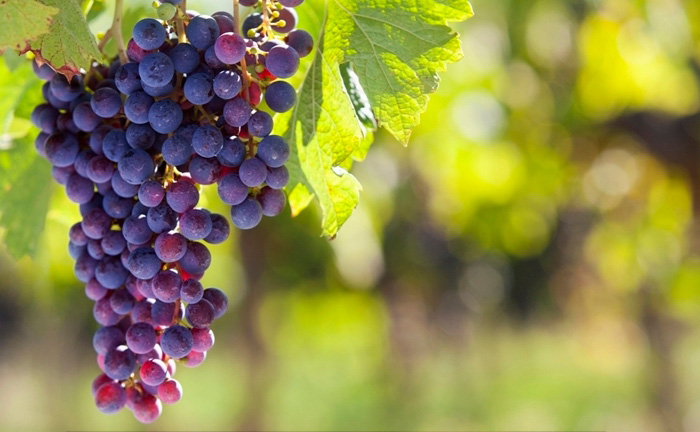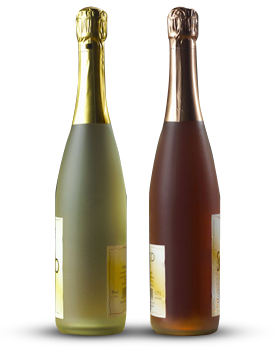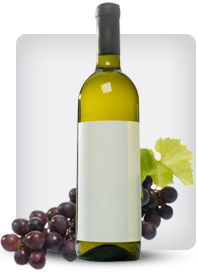

Category: Zinfandel Wine
What Is Great Wine Actually?
Posted onIf you ask someone what actually Great Wine is, then you should know that this question has both no answer and about a zillion answers at the same time. Why is that? The answer, in fact, depends on the person you ask, particularly the time of asking.
There is no one type of wine drinker first of all. With that fact as our basis for moving ahead, you can see where you might come up with a gazillion different answers. I know there is no number relating to a Gazillion, but let it be enough that there are plenty of different types.
The range extends from the down and out street wino to the extremely upscale wine clubs found in the eastern seaboard of America. And then of course there are our European cousins that consume much more wine than we Americans do routinely. So who you ask about great wine will definitely influence the answer you get back.
So is the question even worth asking? From my perspective it is in fact. But who you ask may come as a surprise. You should ask yourself. That’s right. What you think is a great wine is all that is really important when it comes to drinking the grape nectar. After all, it’s your taste buds you are concerned with and not someone else’s. You want to please yourself. You want to experience pleasure when consuming a glass of wine.
What will play into and affect that experience is the surroundings with which you find yourself when drinking some wine. Why is that important, well there are some wines that just do not fit some occasions. And if you don’t know at least some basics, your wine selection could end with a very discomforting result.
Wine basics 101: there are White, Red and Rose’ in the color realm. There are desert wines, wines that typically go well with certain types of foods and then there are wines that can be enjoyed just by themselves. Actually all wine fits this last category. It just depends on your mood and taste.
The days of wine snobbery are for the most part over. As the 21st century progresses, it has become more important for the individual to enjoy their selection than fitting a predetermined set of circumstances dictated by wine snobs. Those supposedly in the know.
While everything up till now is true, it’s pretty much an open game, there are a couple of things that you want to keep in mind. One is, you don’t want to select a desert wine such as Muscat to drink with dinner. That may seem like common sense and it is, but if you don’t know what Muscat is, then you could be at the front end of a very big surprise. Muscat is my favorite desert wine. As a child, I use to eat Muscat grapes fresh off the vine from wild grape vines that grew in our neighborhood. It was like free candy.
Up until recently, it was sort of taboo to drink white wine with red meat such as Beef, Veal, Venison or other game meats. Red was strictly the wine of choice. And to drink anything other was frowned upon by almost everyone. That is no longer true. It is completely acceptable to drink a white with a dinner steak. If that wine is to your liking, then do it.
So the old guidelines of food and wine pairings are not so much in vogue anymore. You will find that attitude at some upscale eateries that provide a wine Somalier. When faced with that situation, you just have to do what you feel comfortable doing. But other than that, great wine is the wine that makes you smile. Maybe even giggle a bit. Champagne bubbles popping about your nose is likely to cause that reaction more so than any other.
So….Great wine, what is it? It’s the wine that you love to drink, regardless of other’s opinions and ideas. So go ahead and have that Merlot with sauteed Prawns over Linguine or a nice Pinot Gregio with your Rib eye. You have no one to please but yourself.
White Wine Grapes Guide
Posted onGrapes used to make white wine produce an array of flavors and colors, with colors ranging from clear to a golden yellow as the wine ages. Since different climates affect the flavors of the grapes, different regions produce drastically different wines.
In extremely warm regions, the grapes become less acidic and the color of the wine tends to be more golden yellow. In temperate climates, there is more of a balance of acidity and also sweetness in the wine. Cool climates produce more acidic wines where the crop is prone to frost damage if not picked within the season. Chardonnay is perhaps the most well-known grape.
It is grown throughout wine producing regions of the world, but originated in Burgundy. The wine is typically light golden in color with melon and tropical flavors emerging in the wine. Riesling grapes produce a lighter bodied wine than Chardonnay and wine made from this grape usually is sweeter and has a flowery aroma. Sauvignon Blanc is a grape predominately found in France’s Loire Valley. It is a lighter wine that is often paired with a variety of food, including fish and poultry.
Pinot Blanc is a crisp wine that is sometimes made into sparkling wine in France. Champagne is the famous sparkling wine from the French region of Champagne. Only wines produced in this region can legally be called Champagne under a Protected Designation of Origin status.
Chardonnay grapes are most often used in making champagne, but blends with Pinot Noir are not uncommon. White wine grapes produce wine that is lower in tannins then red wine, since the wine is produced with minimal contact of the juice with the grape skins and seeds. The absence of the dry and intense flavor from high amounts of tannins make white wine easier for wine novices to begin tasting and enjoying wine.
How to Conduct a Wine Tasting
Posted onWine tasting is a fine art that has been perfected over time. While professional wine tastings are conducted by wine merchants and buyers, it is easy to have your own informal wine tasting at home with friends. Here are some tips to properly taste wine.
First, pick 3 to 6 wines. If you aren’t very familiar with wine yet and are just looking to explore some wines, pick some that you have been eying at the store, anything from red to white. If you want to conduct a more sophisticated wine tasting, limit your wine selection to one type of wine, such as Merlot or Chardonnay, or even to one vineyard. If you want each taste to be a surprise, put the bottles in brown bags so that you and your friends can’t see what wines have been chosen.
For each wine, pour a small amount of wine (2 ounces or less) into stemmed glasses. Smell the wine first to get an impression of the aroma. Taste the wine, then spit it out discreetly, or if you prefer to make your wine tasting more lively, feel free to consume the wine!
Between each sampling, have some small snack foods available to cleanse your palate. Bread with cheese and mild fresh fruit usually work well. Don’t get anything too strong that will interfere with the taste of the wine. Have water available and rinse the wine glasses by swirling some water inside and dumping it out. Continue with each wine until you and your friends have had a chance to taste them all. To make it more interesting, you could set up a contest to see who can correctly guess the type of wine for each bottle.
Wine tasting is a great way to try several wines and learn about the large diversity of wines available. While wine tasting can be as sophisticated and formal as you desire, it can also be as fun and unique an experience as you and your friends want. Think of your own fun personal touches to add to your wine tasting, such as a theme, blindfolded tasting, making special snacks, and more.
For more information on foods to pair with your wine and recipes to try, please visit the informative, interactive food website CD Kitchen here.
Sulfites in Homemade Wine
Posted onSulfites are a source of much discussion in wine making. Let’s start our discussion by finding out exactly what sulfites are and why they’re important to winemakers.
Sulfites occur naturally on all sorts of foods, including grapes, garlic, onions and lots of other plants. This is nature’s way of preventing the growth of microbes.
In wine making, sulfites are used by wineries as a preservative and sterilization agent. They also use sulfites during the initial grape crush to kill off the native yeasts that occur on all wine grapes. When the wild yeasts have been eliminated the winemaker can introduce his own yeast to better control the fermentation and also the end product.
Are sulfites dangerous? The answer is yes, they can be. A person who is sensitive to sulfites can have asthmatic reactions and also headaches that range from mild to severe and even life threatening. If you’ve ever had a bad headache from one glass of wine, you may be allergic to sulfites.
There are laws that regulate the use of sulfites, and manufacturers are required to label all products that exceed 10 parts per million. Wine containing less than 10 PPM sulfites don’t have to be labeled. In fact, the use of sulfites has been banned for use in fresh fruits and vegetables by the FDA.
You can find wines produced by some wineries that contain no sulfites, although some folks will argue that grapes naturally contain sulfites and so therefore can never be sulfite free. However, the levels of sulfite can be so low as to be undetectable, and the winemaker will add no sulfites at any time during the process. Wine purists are able to appreciate the bouquet and fruit flavors of a wine without sulfites.
So, should you use sulfites in your homemade wine? My answer is yes, as recommended by the kit or recipe that you’re following. But it’s really a personal decision, and there’s lots of room for argument and experimentation.
I believe sulfites make up for less than sanitary conditions that are present during homemade wine making, and can extend the shelf life of your wines. I would, however, encourage experimentation on your part if you think you’d like to try making wines without adding sulfites.
Just ensure your cleaning and sanitizing are impeccable and give it a try!
Racking Your Homemade Wine
Posted onRacking your homemade wine is vital to producing a high quality product. Don’t be put off by the term, though. When winemakers rack their wine, they are simply transferring it from one vessel to another. A typical batch of homemade wine will be racked at least 2 times, and can sometimes need to be racked up to 4 times.
The most important aspect of racking wine is to leave the sediment behind. This will help the wine clarify and can also prevent the wine from picking up unwanted flavors and odors that can come from sitting too long on the sediment.
When to rack your wine is an important consideration. When you start a batch of wine, the initial fermentation will be very vigorous as the yeast consume the sugar in your must and converts it to ethanol and carbon dioxide. This is called primary fermentation and usually takes 5-7 days. Approximately 70 percent of the wine’s fermentation will take place during this stage.
After primary fermentation slows down, your wine can no longer protect itself from contamination and needs to be protected by an airlock. This is the first racking, and a simple siphon method through a flexible food grade plastic tube will accomplish it. Gravity does all the work, so carefully place your primary fermenter a couple feet off the ground and start the siphon process.
There are items available to assist with racking. One is called a racking cane. This is a rigid piece of plastic about 2 feet long. One end is specially made to sit on the bottom of the vessel while not drawing excess sediment into the tube. You can get by without one, but it’s a great tool to have in your wine making toolbox.
For the first racking, try to leave as much sediment behind as possible. If a little is transferred into your secondary fermenter, don’t panic. It’s not as important on the first racking, so get as much liquid as you can.
The second racking should take place after your fermentation is complete. This can be a week or two or even 6 or 8 weeks, depending on how your fermentation progresses. This time you can be a little more careful about leaving sediment behind, even if it means losing a little liquid. Again, the same procedure as above applies. Start a suction and let gravity do the work for you. Don’t forget to put the airlock right back on the wine, as exposure to air will oxidize your wine.
The third racking should take place after your wine has completely cleared. Remember, it will not clear in the bottles so be patient with this step and don’t rack until you’re sure it’s as clear as it can be. Leave every bit of sediment behind during this racking. This is also the time you can add Sodium Bisulfite to the wine. This will drive off any excess oxygen that was created during racking.
Racking is an important step in homemade wine making. The better you understand and perform this vital step, the better your finished product will be.
popular posts
-

How to Decant Merlot Properly: A Guide to Unlocking Its Full Potential Merlot, with its plush texture and approachable profile of plum, cherry, and chocolate notes, is one of the world’s most beloved red wines
12-22 2025While often enjoyed straight from the bottle, taking the time to decant a Merlot can dramatically elevate the experience. Decanting serves two primary purposes: Read More
-

Pinot Noir Wine Subscription Reviews: A Curated Journey for the Discerning Palate For wine enthusiasts, few grapes inspire as much devotion and discussion as Pinot Noir
12-21 2025Celebrated for its elegance, aromatic complexity, and remarkable ability to express *terroir*, Pinot Noir can be both thrilling and intimidating to explore. This is Read More

